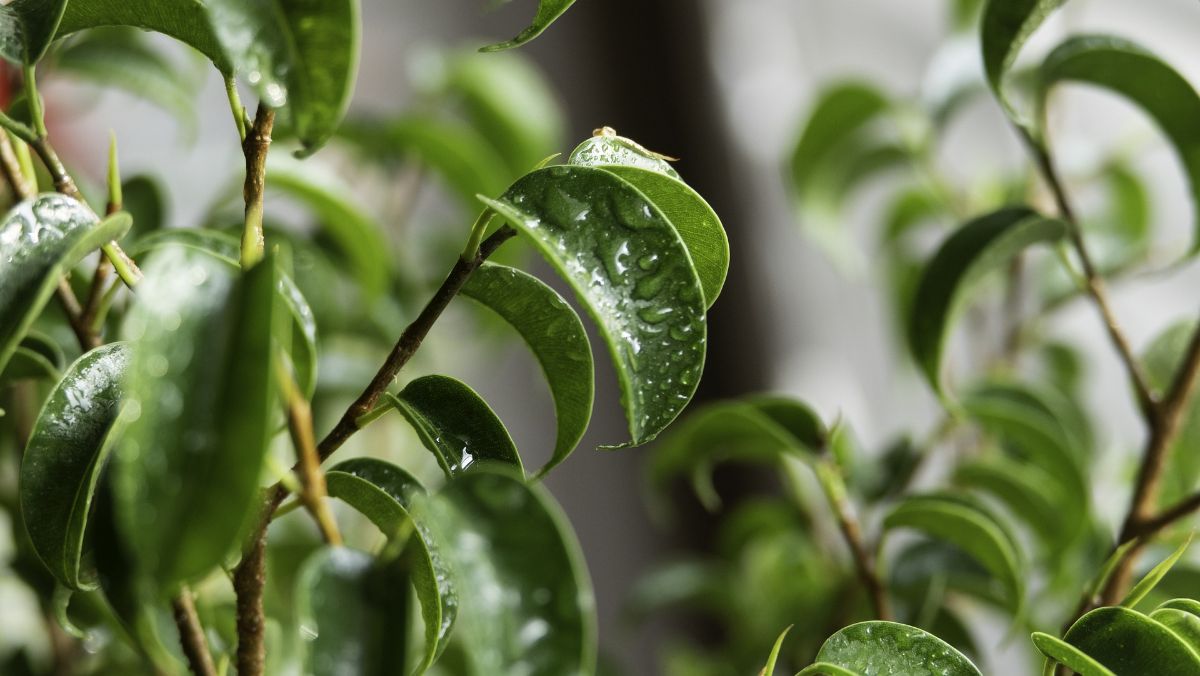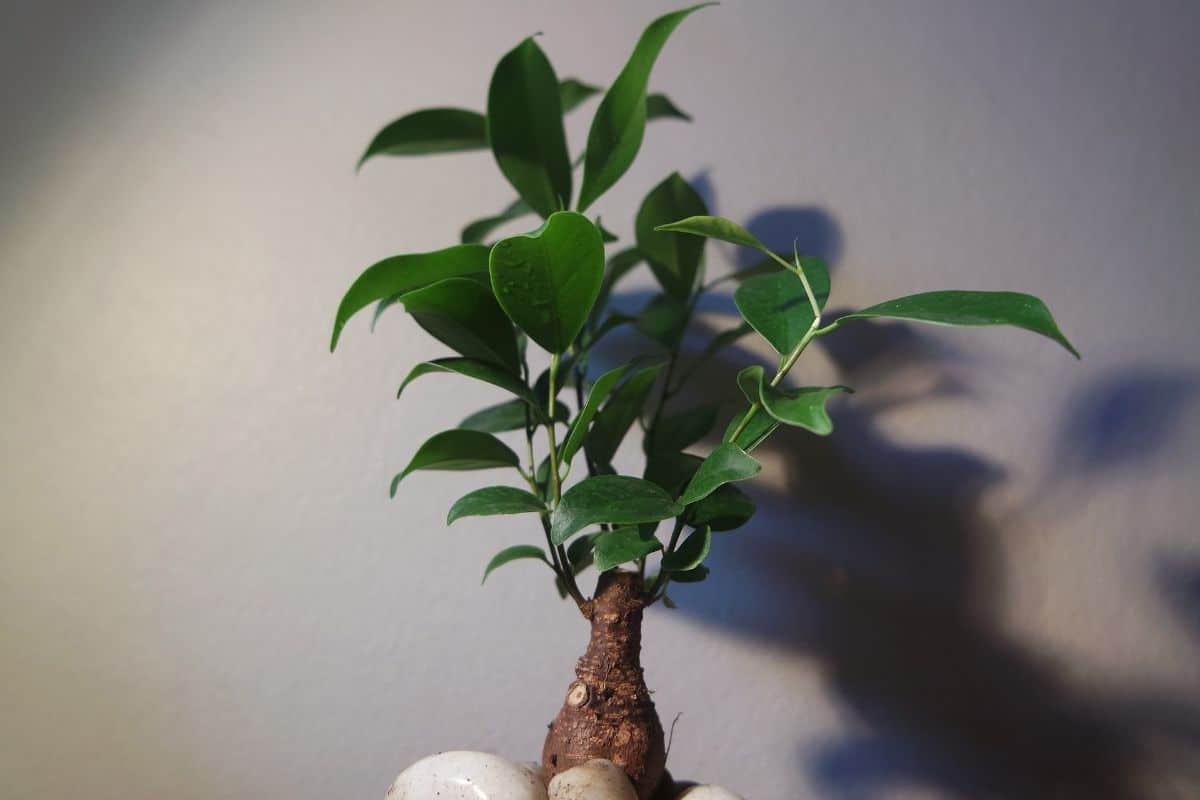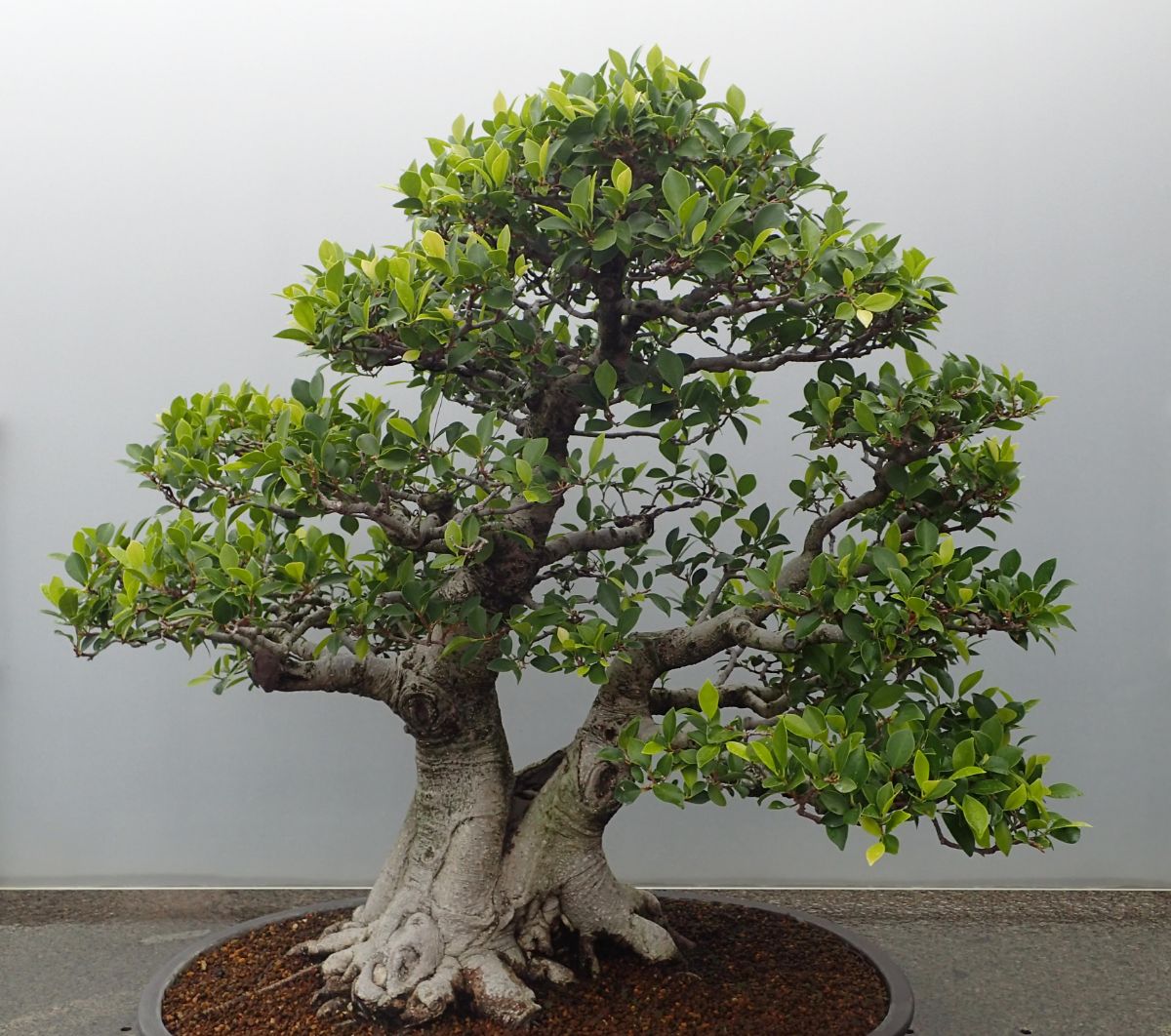
Having a bonsai often means spending more time to meet all the needs of the plant. Depending on the variety, it requires more or less care, but one of the trickiest issues, and the reason why many end up dying, is irrigation. Of all the types you can have, the ficus is one of the easiest to care for. But, How to water a ficus bonsai?
If you want to buy a bonsai or they have given you one and you are not sure what care to provide in terms of watering, then we will talk about it so you do not lose it in a long, long time.
A ficus bonsai, what is it like?

The ficus bonsai belongs to the family of moraceae, so it is related to mulberry trees. Focusing on the ficus, you should know that there are between 800 and 2000 different species, and most of them are tropical and subtropical. They have a fast development and are very resistant, which is why it is one of the best species for beginners, or for those who want to have a bonsai that does not give many problems.
Among the species that are used as bonsai, we find 5 varieties, although not all of them are easy to find.
- Ficus pumila: it is native to Asia and one of its characteristics is that it is a climber.
- Ficus microcarpa retusa. This is one of the ones that you will find the most in stores. It is native to Asia and is sometimes called by other names such as Tiger Bark, Ficus Panda, etc.
- Ficus nerifolia. It is not very common to see it.
- Ficus benjamina. It is another of the most used, it is sold as an indoor bonsai.
- Ficus carica. This is the most common species in the Mediterranean. However, they are large and only a treatment to reduce the size could turn it into bonsai.
You are probably also looking for the ficus ginseng But what if we tell you it doesn't exist? Actually, what they market as ficus ginseng is a "modified" ficus retusa. What they do is strangle the roots in order to thicken them and thus make it look like a ginseng. But in reality the species as such does not exist, and professionals see this type of tree as an aberration.
How to water a ficus bonsai

Now that you know that there are many ficus bonsai, you should know that some of these species have certain "peculiarities" when it comes to watering. It is not the same to water a ficus ginseng than a benjamina, nor is it the same as a ficus retusa.
As a general rule, ficus bonsai are not plants that need constant watering, nor be very aware of the quality of the water, since they adapt to what you give them. That does not mean that, if you add soft water that is also at room temperature, it will not thank you more.
Depending on where you have the ficus, the watering will be different. For instance:
If you have your ficus in a kokedama
The instructions for watering these types of plants tell you to dip the moss ball once a week. But in bonsai this will depend on the season of the year and the species of bonsai.
- Yes it is summerYou should water the moss ball at least 2-3 times a week. You submerge once and the rest by pouring water over it.
- Yes it is winter, then it may hold up well for 1-2 weeks without you having to water.
What is the trick here to know if you have to water? Well, two things:
- That when taking the kokedama it does not weigh (it means that it needs watering).
- That you notice the dried moss ball.
If you have your ficus in a normal pot
It may be that, instead of a ficus bonsai, what you have is a ficus prebonsai, which is also very common to see in stores. The big difference with a bonsai is in the type of pot it uses, since it is not the usual one for bonsai, it is more rounded and elongated.
How are these trees watered? Well, here we must make a point and that is that, in most cases, when we buy a bonsai (either in a normal pot or in a specific one), the soil they bring is usually caked (unless you buy it in a store specialized in bonsai and still, it will depend on the tree). This implies that the water may not reach the roots, and not nourish them well. Therefore, if you see that the soil is not good, it is best to do an emergency transplant, trying to remove as much soil as you can with your hands (do not go too deep or it will stress too much) and placing it in a pot with good soil.
Regarding the irrigation of ficus bonsai, this It can be done from above, wetting the leaves and the earth. In fact, it loves humidity, although it is not good to go overboard so that fungus does not appear.
If you don't want to water it like this, water the soil and wait until it is well moistened. If you see that the water comes out too soon, the earth is very draining, so it would be better to water with a saucer or by immersion for a few minutes.
If you have your ficus in a bonsai pot

Bonsai pots are characterized by being smaller and with just the right space for the tree, no more, no less. But that carries a problem and it is that, sometimes, the water provided may not be enough, or that it falls when watering and does not reach the interior due to the inclination of the earth.
In these cases you can water in two ways:
- With a tray below, filling it up and waiting about 15-30 minutes. After that time, the remaining water is removed to prevent the roots from rotting. What happens if you drink it too fast? Well, we advise you to refill it because it will mean that it needs more water.
- With a immersion. Others decide to use the immersion method, placing the pot completely in a container full of water to cover it. If it lacks water, it will begin to bubble and, when these no longer appear, you can remove it.
Once you water it, you have to wait until the soil looks dry to do it again.